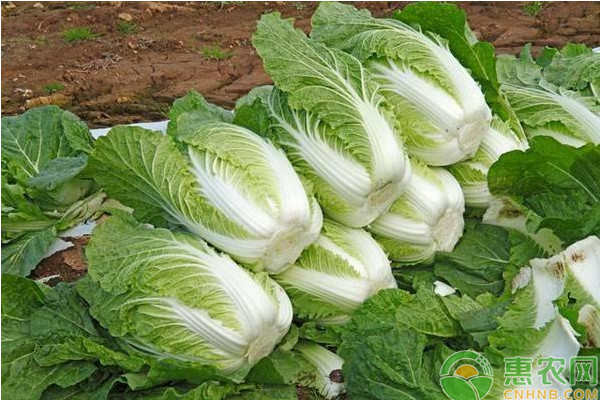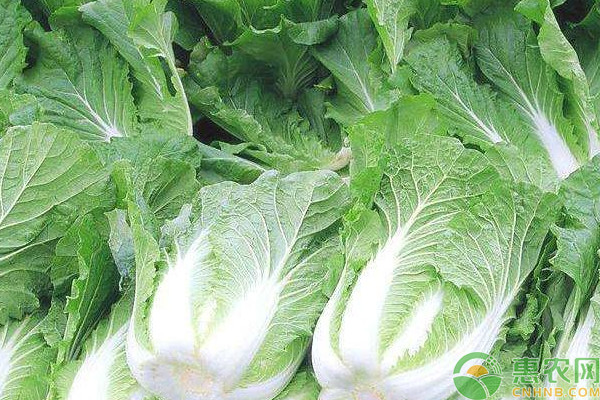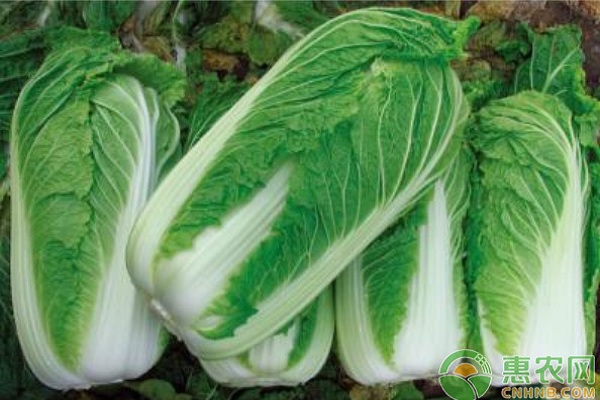How to grow organic Chinese cabbage? High-efficiency cultivation techniques for organic Chinese cabbage
What are the differences between organic Chinese cabbage and common Chinese cabbage? Organic Chinese cabbage is the cabbage that is cultivated according to the production method of organic agriculture. It is characterized by no pollution, high quality and high nutrition. The following Huinong Xiaobian summed up an organic Chinese cabbage cultivation technology for reference only! Base selection Choose a plot with no pollution and good ecological conditions to establish a production base. The base should be far away from industrial and mining areas and transportation, avoiding the impact of industrial and urban pollution sources. The quality of the air environment in the producing area, the quality of the farmland irrigation water and the quality of the soil environment should be consistent with the production standards of organic agricultural products, and the soil pH is 6.5-7.0. The former cockroach has not planted cabbage, cabbage cross flower crops. 2. Soil preparation and fertilization Before planting or sowing, 5000kg of high-quality decomposed farmyard manure is applied per acre, combined with deep-turning one-time application, and then 50kg of organic bio-specific fertilizer is applied as base fertilizer, ploughing, tilling, ridging, and ridge width 70cm. 3. Variety selection Choose mid-late maturing varieties suitable for local climatic conditions, such as high yield, large individual plants, good quality, and cold-tolerant varieties, such as Beijing New No. 3, CR Delicious, Qiubao, and Xiqiu variety. 4. Cultivation of strong seedlings 4.1 Live Sowing in mid-July, there are two methods of seeding and hole sowing. Soil drought should be planted with water. When broadcasting, first open a shallow ditch 1.5-2.0cm deep, water the ditch along the ditch, and evenly pour the seeds into the ditch after the water seepage is completed; when the hole is sowed, the shallow hole with a depth of 1.0-1.5cm is pressed at a distance of 40-50cm. Watering the hole, after the water has been infiltrated, 5-6 seeds are planted at each hole, and the soil is 1.0 cm thick. 2,500 mu seedlings per mu. 4.2 Seedling transplanting If the cabbage is replanted after the early ripe melon or potato, it is necessary to raise seedlings for the purpose of breeding days. 4.2.1 Preparation of nutrient soil Take 40% of the field soil without germs, no pathogens, no long-lasting residual herbicide, 60% of high-quality and decomposing farmyard manure, and then sprinkle a certain amount of microbial fungus Trichoderma, which can effectively prevent and cure seedling disease Diseases and other diseases, and then mixed evenly, used for seedbed soil, plugs, nutrition and nursery. 4.2.2 Seeding method Seedling bed seedlings, using the strip method to open a shallow ditch 1-2cm in 10cm line spacing, watering along the ditch, after the water seeps, the seeds are evenly spread in the ditch, and then the soil is 1.0cm thick. When two true leaves are used, they can be transferred into a nutrient bowl for management. It can also directly use nutrient mash and plug seedlings: the prepared nutrient soil can be directly loaded into the sputum and the plug tray, the bottom water is poured, and 3-5 seeds are spread at each hole, and then the soil is covered with 1.0 cm. After the seeding is completed, the film is moisturized, and the film is removed when the seedlings are arched. 4.2.3 Seedling management Moisture management, after sowing, if the sensation is good, no watering is needed during the germination period. If the bottom is insufficient or in the hot and dry year, water is poured after sowing, and the second water is poured when the seedlings are arched. After the cotyledons are unfolded, the third time is poured. water. 5. Field management 5.1 seedling topdressing 7-8 days after the seedlings are released from the live field, the first seedlings are combined with watering, and the humic acid foliar fertilizer is sprayed. When the seedlings grow to 4 true leaves, the second seedling is selected. Stay strong seedlings, large seedlings, eliminate weak seedlings, diseased seedlings, and seedlings. 5.2. Planting transplanted seedlings After sowing for 20 days or so, when the seedling grows to 5-6 true leaves, it can be planted. Water is poured on the day before planting, which is convenient for seedling and transplanted with soil to avoid root damage. 40-50cm plant spacing on the ridge before transplanting. Open the planting hole, place the seedlings, and pour the bottom water into the hole. After the water seeps down, cover the soil to the base of the stem. 5.3. Cultivating weeding It is necessary to shallow the back of the ridge, deepen the ditch, and pour a small amount of loose soil into the root of the seedling to prevent the root strip from being washed away by water. 5.4 Rosette management In this period, seedling measures are used to promote root development. After the seedlings are planted, 20 kg of bio-organic vegetable special compound fertilizer will be applied per acre. After fertilization, watering will accelerate the decomposition of the fertilizer, and then water will be poured once after 3-4 days. About 10 days before the ball is controlled, the seedlings are controlled to promote the growth of the leaf ball. When the leaves are dark green, thick and wrinkled, light and wilting at noon, the young leaves turn from yellow-green to green to end the seedlings. 5.5 Balling period When the rosette leaves are closed, the heart leaves begin to conceal and the seedlings are finished. The watering should be started. The water volume should not be too large to prevent the petiole from cracking and rooting. After 2-3 days, the water should be poured again. After the ridge is closed, water should be poured every 5-6 days. Keep the ground moist, stop watering 1 week before harvest, reduce the water content of the plant is conducive to storage. 6. Pest control Pests and pests implement the plant protection policy of “prevention first, comprehensive preventionâ€. 6.1 Agricultural control Through the selection of disease-resistant varieties, reasonable fertilizer and water management, crop rotation, and intercropping, we will protect agricultural management measures such as natural enemies and comprehensively control pests and diseases. 6.2. Physical control Use insecticidal lamps and sweet and sour liquid to trap adult adults of cabbage caterpillars, diamondback moths, and underground pests. 6.3. Biological control 6.3.1 Pest Control Plutella xylostella adults are trapped with sexual attractants. Aphids, Plutella xylostella, and cabbage caterpillars were treated with matrine, BT emulsion, avermectin, and cabbage caterpillar granule virus spray. Yellow stripe jumper is sprayed with rotenone emulsifiable concentrate and matrine in seedlings and soil control. 6.3.2 Disease prevention Cabbage soft rot is controlled with 30% mineral oil·stone sulfur microemulsion or oxytetracycline, neomycin or agricultural streptomycin, and neutrophin. Cabbage virus disease must first pay attention to the control of aphids, which are the vectors of viral diseases. In the early stage of viral disease, amino oligosaccharide, or fragrant polysaccharide, or Ningnanmycin spray is used for prevention and treatment. Cabbage downy mildew is sprayed with polymycin, or Bacillus licheniformis, or matrine. 7. Harvest 7.1 Harvesting When the package is tight, the harvest can be started in real time. From the beginning of October to the end of January, the method of chopping vegetables and pulling vegetables is adopted. 7.2 Post-harvest handling Dry and sunny, arrange the cabbage in the field neatly, make the leaf ball to the north, the roots to the south for 2-3 days, then turn over and 2-3 days. Remove yellow leaves, diseased leaves, old leaves, roots, and make clean dishes available. 7.3 Storage Store at 0-1 ° C, air humidity 90%-95%, in a ventilated environment. The above is all about today's organic cabbage cultivation technology. Welcome to the farmers who have the idea of ​​cultivating organic Chinese cabbage. Many more information, please continue to wait for the update of Hui Nong.
Shaft Collar
Shaft Collars are common pieces of hardware used for holding bearings and sprockets to shafts, situate components in motor and gearbox assemblies, and serve as mechanical stops. Shaft collars can be found in virtually any type of machinery and are frequently accessories to other components. Shaft collars provide three primary functions: 1) holding components in place, 2) locating or positioning components on a shaft, and 3) creating an attachment between shaft and another component. Despite their simple design, shaft collars play an important role in a wide range of industrial applications.
Yokelink Shaft Collars come in both inch and metric sizes and are available in either Carbon steel or 304 Stainless Steel. Yokelink shaft collars includes set-screw collars as well as one-piece (single-split) and two-piece (double-split) collars with zinc plated or black oxide finish. Our shaft collars are available for most common sizes ranging from 3/16″ to 4″ and 5mm to 100mm. When you need Shaft Collars, refer to our catalog, we offer them in a full selection of sizes, provide the diameter or part number to get a quote on these shaft collars, leave your message, or send us an email. You can also call us to get answers to your questions and place your order.
Shaft Collars,Zinc Plating Shaft Collars, set-screw collars, single-split Shaft Collar Ningbo Yokelink Machinery Co.,Limited , https://www.yokelink.com



